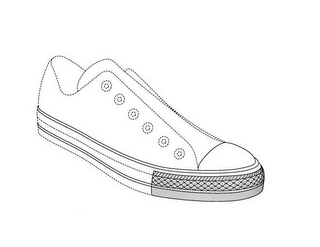Converse filed a complaint at the International Trade Commission (ITC) seeking an order blocking the importation of several shoes that Converse alleged to infringe Converse’s trade dress rights in three design elements on the mid-sole of Converse’s All Star shoes.

Converse asserted trade dress rights in the “design of the two stripes on the midsole of the shoe, the design of the toe cap, the design of the multi-layered toe bumper featuring diamonds and line patterns, and the relative position of these elements to each other.”
Here, the design elements of the shoe are product design trade dress, for which the owner must show that these design elements have acquired distinctiveness in the relevant market place. If the owner fails to show acquired distinctiveness, then it does not have trademark rights to enforce.
Third party use of a mark is relevant to whether a trademark has acquired distinctiveness in the relevant market place. If many third parties use a mark, then it is less likely that this mark will be recognized in the marketplace as associated with one source of goods or services.
The defendants in the ITC proceeding asserted that the design elements had not acquired distinctiveness. They relied, in part, on evidence of third party designs. Some of those third party design usages were old.
The Federal Circuit said that the ITC erred by too heavily relying on prior uses long predating the first infringing uses and the date of registration in Converse, Inc. v. ITC, No. 2016-2467 (Fed. Cir. 2018). The court relied on Section 2(f) of the Lanham Act to find that the five year period prior to the relevant date was the most relevant time frame to consider third party use.
Generally a trademark owner must show acquired distinctiveness prior to the date when the first alleged infringement occurred by the other party. Therefore, the first use by the the other party is generally the relevant date (or the date of registration, if a trademark registration is at issue).
The court said that “Consumers are more likely to remember and be impacted in their perceptions by third-party uses within five year and less likely with respect to older uses.” It continued that “uses older than five years should only be considered relevant if there is evidence that such uses were likely to have impacted consumers’ perceptions of the mark as of the relevant date.”